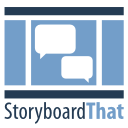Category Archives: Year 4
Digital Story Telling – Free Music
Free Music Sites:
Free Music Archive: http://www.freemusicarchive.org/
Bensound: http://www.bensound.com/
Free Sound: http://www.freesound.org/
CC Mixter: http://www.ccmixter.org/
Soundcloud: https://soundcloud.com/
Jamendo: https://www.jamendo.com/
Mining for Stories – Thanks to Sybila
Mining for Stories
Which of these will you choose to answer in your Digital Story?
“I don’t have any interesting stories, nothing has happened to me.”
This is often the initial response people have when faced with the task of storytelling. Here’s a secret: everyone has stories. Human beings inherently have stories about their lives. The problem is sifting through the thousands of memories to find a story we value, and hope others value. Here is a list developed by Christina Baldwin in her book Storycatcher that has been adapted and will help in your search.
1. Describe one of your earliest memories. Who is with you? Is this an actual memory you have, or was it told to you?
2. Think of your grandparents. What is your relationship with any one of them? How involved were they in raising you? Affecting you? Influencing you?
3. Where do you come from? What is the landscape? Who are the people? Is there a person, or memory you have that captures the place?
4. Choose a family heirloom or artefact that has a history. What does it mean to your family? What is its history? Why is it valued by your family? Who has it now?
5. What do you know about the origins of your family? What was life like for older family members when they were your age?
6. Life is full of mysteries. Pick a mystery that you are curious about can you imagine a story that explains that mystery?
7. Is there a family story that you are responsible for passing on?
8. What was a typical family dinner like when you were growing up? Can you share some special family meals or ways in which your family celebrate?
9. Describe a world event that changed your thinking. What were you doing when it happened? How did you view the world differently?
10. If you had to make a time capsule of yourself, what would you include? How do you want to be remembered?
11. Where do you go when you are afraid? Did you have a special place you went to when you were scared? Angry? Lonely?
12. Describe a lesson you learned the hard way. How did this lesson affect you?
13. Describe a sacrifice you made. How did it change you? Was it worth it? Would you make the same sacrifice again if you had the chance to do it again?
14. Where were you at age___? How are you different now?
15. Do you know your birth story? Who told you? Do you have artefacts from around the time you were born?
16. Do you have memories about pivotal choices you have made in your life?
17. Describe an accomplishment that gave you great pride.
18. Think of a decision that one of your family members made that you are grateful for. Why are you grateful?
Digital Storytelling
Behind the Lens
http://digitalstorytelling.coe.uh.edu/video/Behind_the_lens.mp4
https://www.youtube.com/watch?v=rUZXBc6yRhU&feature=youtu.be
http://digitalstorytelling.ci.qut.edu.au/index.php/stories/digital_storytelling_arrives_at_qut
The 7 Elements
Free Digital Storytelling Tools
https://elearningindustry.com/18-free-digital-storytelling-tools-for-teachers-and-students
Monster Mash
http://digitalstorytelling.coe.uh.edu/video/Monster-Mash.mp4
Pop Ups
http://digitalstorytelling.coe.uh.edu/video/SMALL%20Paper%20Popups.mp4
Phasmids – Room 9 Final Written Presentations
Phasmids – Room 12 Final Written Presentations
Phasmids – Room 11 Final Written Presentations
Phasmids – Year 4 and 5
A Comparative Report – Year 4-7
Comparative reports compare or contrast particular characteristics of similar things or processes. Comparative reports are typically structured as follows:
- General statement
- Introduces ‘things’ to be compared
- Description
- systematic analysis of similarities and differences
| Title | Stars and Planets |
|
General statement Entities (Things) |
Our solar system comprises the sun (a huge star) and all the planets orbiting it as well as other material. Have you ever wondered what the difference is between a star and a planet? |
| Description | |
|
Similarities and Differences Movement |
The basic difference is that a star gives off light and a planet only reflects light. A star is a ball of gas. Pressure at the centre of the star causes a nuclear fusion reaction to start. This fission burns and creates light for millions of years. A planet is a spherical ball of rock or gas that is usually found orbiting a star. Over time a star will eventually change properties and become a planet but a planet will remain relatively unchanged. |
| Appearance | When observing planets and stars through a telescope, several differences can be seen. Stars appear to twinkle whereas brighter planets don’t. The closer, larger planets appear as disk-shaped; in contrast , the stars tend to be points of light. |


